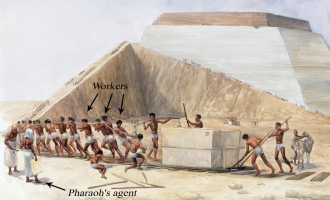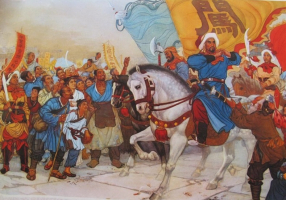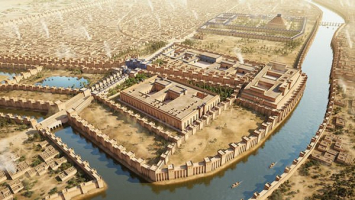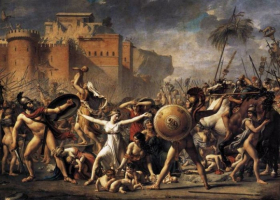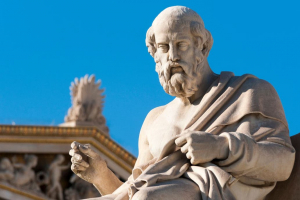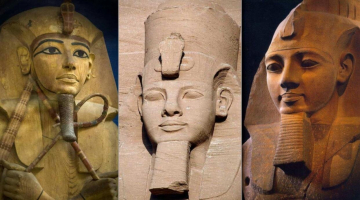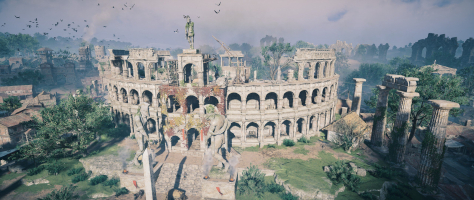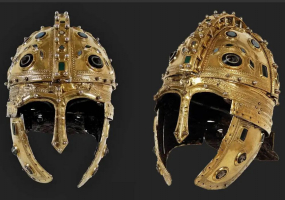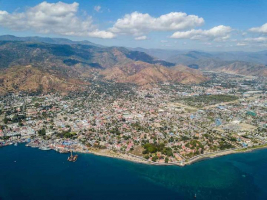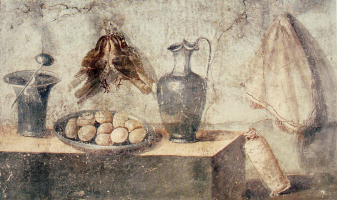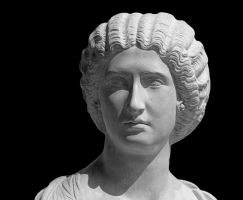Top 7 Most Important Events in Ancient Persia
Ancient Persia, which is present-day Iran, stretched from the Euphrates River in the west to the Persian Gulf in the east. The area included a significant area ... read more...of desert, mountains, valleys, and pastures. The inhabitants of ancient Persia were subject to an absolute monarchy and lacked the same fundamental liberties and privileges that we take for granted today. Let's explore most important events in ancient Persia with Toplist!
-
The Medians controlled considerable areas, particularly in Iran and Eastern Anatolia. Cyrus had gained control of Ecbatana, the Median capital city, by 550 BC. The fact that Cyrus was the grandson of the exiled Median monarch Astyages meant that he had little trouble establishing himself as the legitimate heir to the throne. Additionally, Cyrus received the entire territory that the Median kings ruled. Cyrus the Great founded the Achaemenid Empire of Persia in 550 BC after defeating King Astyages of Media, who controlled a large portion of Iran and Eastern Anatolia. In Persia, Cyrus the Great took control in 559 BC. It is well known that the Achaemenid Empire was the biggest empire in antiquity. It spanned from Anatolia and Egypt to North India and Central Asia in Western Asia. Armenia, Cappadocia, Parthia, Aria, and Hyrcania were also a part of it.
Because Cyrus was the great-great-grandson of Achaemenes, the first Persian king, the empire was given that name. To keep things in order after founding the empire, Cyrus practiced religious and cultural tolerance. The empire grew much more under Darius the Great. He changed the value of the currency and chose the satraps, or regional rulers, to preside over the empire's lesser regions. After some time, the empire's riches and power rose, and Darius decided to build Persepolis as its capital. The conflicts that Media was conducting against Lydia and the Neo-Babylonian Empire were also passed down to Cyrus along with the Median Empire's great wealth and territory. Cyrus had to put down quite a few uprisings from former Median vassals and tributaries after the Median Empire fell. The Central Asian nations of Saka and Bactria (or Bactriana) are two examples of those that rebelled.
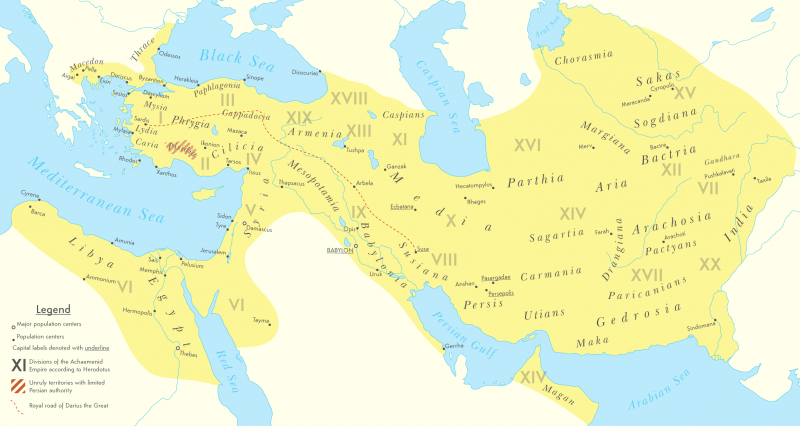
Photo: Wikipedia 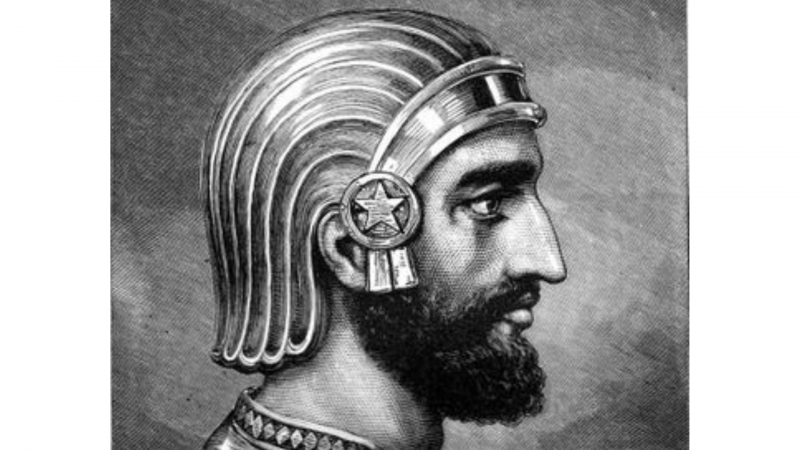
Photo: Realm of History -
The fall of Babylon, also known as the Liberation of Babylonia, happened in 539 BC, around 11 years after the Persian Empire was founded. This is considered as one of the most important events in ancient Persia. The Babylonian Empire was beginning to show some signs of weakness, making them an easy target for Cyrus' Persian army. King Labashi-Marduk was deposed in Babylonia by Nabonidus, the Assyrian priestess Adda-son. Guppi's The majority of the affairs of the empire were then given to his son, Crown Prince Belshazzar, by Nabonidus. However, Belshazzar's lackluster political abilities made him unpopular with many powerful Babylonians. Therefore, many Babylonian officials were delighted to see Prince Belshazzar deposed when Cyrus' ever-expanding kingdom turned its attention to the Babylonian Empire.
The Persian Kingdom had successfully incorporated Babylonia into its expanding empire by the year 539 BC. A prehistoric clay cylinder containing Akkadian cuneiform writing, known as the Cyrus Cylinder, claims that Cyrus did not impose Persian culture and religious beliefs on the Babylonians. He also stepped in to save the persecuted Jewish community in Babylonia, which had been there for a long time. It is reported that he permitted the Jews to go back to their residence in Jerusalem. Cyrus put the overthrown Babylonian king Nabonidus in jail and reinstated Marduk as the city's protector deity. The moon god Sin was given more attention under Nabonidus' rule than Marduk. Cyrus garnered more respect from the Babylonians by drawing parallels to the well-known Assyrian monarch Ashurbanipal. The Babylonians also came to admire Cyrus for his efforts to revive the ethics and culture of the Neo-Assyrian Empire.

Photo: Ancient Origins 
www.ishtartv.com -
The eldest son of King Cyrus II and the second king of the Achaemenid dynasty was Cambyses II. He ruled between 529 and 522 BC. In 525 BC, he overcame Egypt, which was one of his greatest triumphs. During the reign of Pharaoh Psamtik III, Egypt was invaded. The Greek generals serving in the Egyptian army gave Psamtik their full backing, and he also obtained some help from Polycrates of Samos. Cambyses, however, triumphed in the Battle of Pelusium in the Nile Delta later that year in 525 BC. Additionally, he was successful in taking Heliopolis and Memphis, which ultimately caused the Egyptian resistance to crumble. Many people thought Cambyses was odd, and according to Darius the Great, before traveling to Egypt, he assassinated his brother Bardiya in secret.
Cambyses adopted the regal titles used by the previous Egyptian pharaohs, including "king of Upper and Lower Egypt" and "descendant of (the gods) Ra, Horus, and Osiris." Cambyses claimed to be the son of Princess Nitetis, a daughter of the pharaoh Apries, and utilized propaganda to portray his invasion of Egypt as a rightful unification with the local Egyptians and that he himself was of Egyptian ancestry. At Sais, Cambyses performed a religious ritual in which he offered sacrifices to the Egyptian gods and had himself crowned in the temple of the goddess Neith. Ancient historians claimed that Cambyses' tenure over Egypt was characterized by cruelty, temple plundering, making fun of the regional deities, and desecration of the royal graves. Historians like Herodotus highlighted the alleged slaying of the sacred Egyptian bull Apis by Cambyses. However, no reports of temple plunder have been made by current Egyptian sources. Cambyses is also alleged to have commanded the sarcophagus burial of an Apis. Four years after Cambyses' demise, in 518 BC, the Apis' successor passed away.
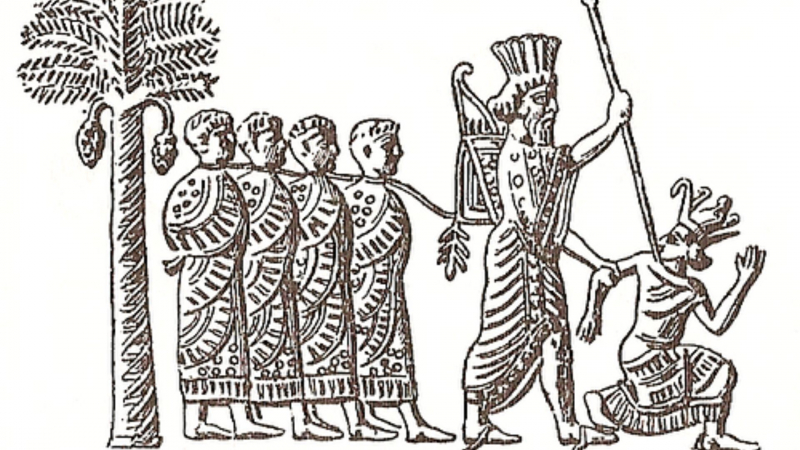
Photo: World History Encyclopedia 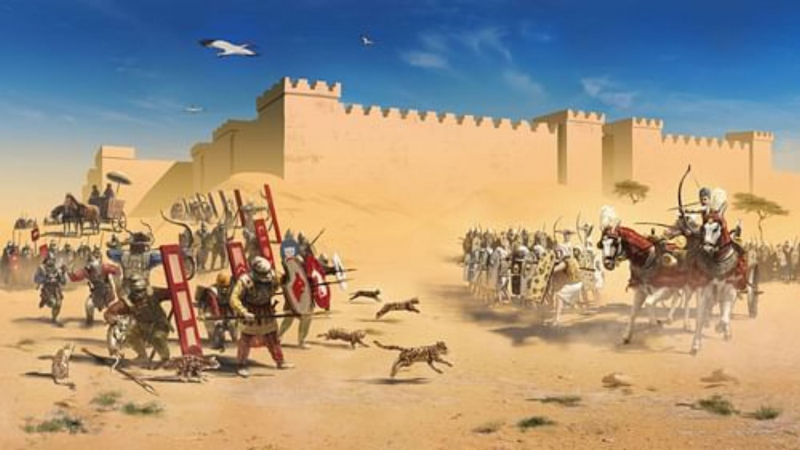
Photo: World History Encyclopedia -
Persia conquered Egypt is the next most important event in ancient Perisa. The successor to Cyrus the Great, Cambyses II, focused on Egypt after conquering Cyprus and Phoenicia. Pharaoh Psamtik III was in charge of Egypt at the time the Persian monarch launched his assault. Psamtik was humiliated by the Cambyses II in the Battle of Pelusim, which was made worse by the defections of some of his top officials. The Egyptian monarch was then apprehended and put in prison.
The Achaemenids had twice invaded Egypt, which was a wealthy nation. At the Battle of Pelusium in 525 BC, the Persians under King Cambyses II took control of it. Egypt was the largest kingdom in the world when it was subdued by the Persians, and it later became a province of the Persian Empire. About 100 years were spent under Persian hegemony in Egypt. Egypt underwent a lot of good changes during the early Persian era, including the construction of temples by King Darius, who also presented himself as a pharaoh of Egypt. But subsequently, ruthless Persian rulers like Xerxes treated the Egyptians, which finally sparked unrest and rebellion. Alexander the Great invaded in 332 BC, ending Persian sovereignty.
Contrary to his father Cyrus the Great, Cambyses II forbade the people in the lands he conquered from continuing their religious practices. He was said to be extremely hostile toward Egyptians, their religion, and their culture. He gave the order to kill the revered bull known as Apis in Memphis, which was sacrilegious. Some sources claim that Cambyses II suffered from a mental disorder, which explains why he gave the order to kill his younger brother Bardiya.
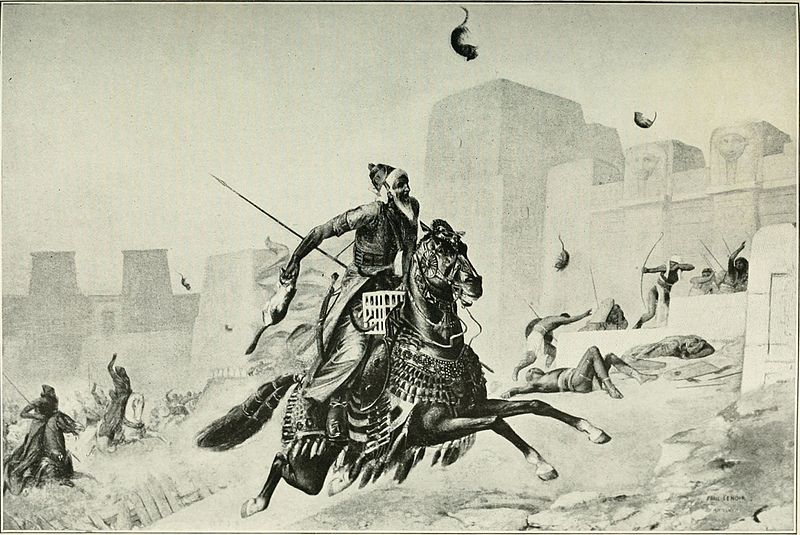
Photo: TOTA.world 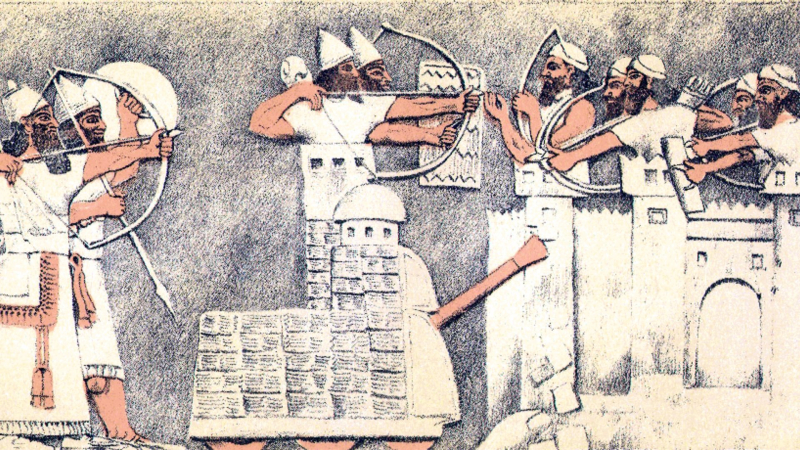
Photo: Heritage History -
The Achaemenid Empire is renowned for its successful implementation of a centralized, bureaucratic administration model, its multicultural policy, the construction of infrastructure, including road and postal systems, the use of an official language throughout its territories, and the development of civil services, including its possession of a sizable, professional army. Its innovations encouraged the adoption of comparable forms of government by other succeeding empires. By 330 BC, Greek Macedonia, led by Alexander the Great, a fervent admirer of Cyrus the Great, had completely subdued the Achaemenid Empire. After the Partition of Triparadisus in 321 BC, the majority of the old empire's territory was ruled by the Ptolemaic Kingdom and the Seleucid Empire, signaling the start of the Hellenistic period. Hellenistic rule persisted until the central plateau elites of Iran attained power under the Parthian Empire.
King Darius I's son, Xerxes, succeeded him and ruled until 465 BC. The empire lost ground while he was in power. There were a number of causes for this. He was a brutal king, yet one of the reasons he fell to the Greeks early in the Persian Wars was because he was a weak man. There were additional sociological factors. As Xerxes was not a strong leader, the social structure of the empire began to collapse. The lower and middle classes banded together to plan riots and other forms of insurrection. Other officials quarreled over foreign policy as the satraps started to seriously disrupt the economy. All of this resulted in the power of the government being reduced.
The populace needed a king who could raise a powerful army and provide enough wealth to keep the infrastructure of the empire in working order. The economy deteriorated, there was little money for new construction or art, and taxes were raised by the government. This ultimately resulted in destitution. Trade suffered, crop production dropped, and Persia was unable to advance in science and education. The Achaemenid Empire collapsed as a result of all these circumstances.
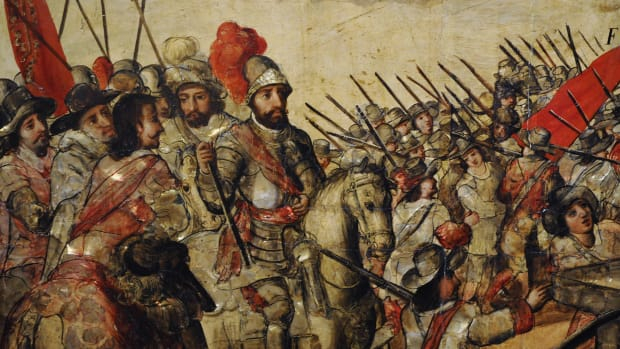
Photo: history.com Source: Knowledgia -
A coalition of Greek city-states led by Themistocles engaged the Persian Empire led by King Xerxes in a naval battle known as the Battle of Salamis in 480 BC. The underdog Greeks won handily despite being outnumbered. The conflict, which was the pinnacle of the second Persian invasion of Greece, took place in the straits between the mainland and Salamis, an island in the Saronic Gulf close to Athens. The Persian army was routed by the Greek allies in one of the biggest and most significant naval battles in history, which took place between the island of Salamis and the port city of Piraeus in Athens.
Faced with a potential loss, the Greeks put together a fleet and launched one last assault on the Persian navy in the Battle of Salamis in the late autumn of 480 BC. The Battle of Salamis, which took place in the Straits of Salamis between the island of Salamis and the mainland of Piraeus in Athens, saw the Persians raise between 900 and 1100 ships, outnumbering the Greeks by roughly two or three times. To resist the Persian fleet's blockade at the strait's two exits, the Greek fleet formed a straight line. The Persian navy was defeated by the Greeks, which came as surprising news to Xerxes. Compared to the pitiful 40 ships lost by the Greeks, the Persians lost roughly 300 ships. After the disaster at Salamis, King Xerxes made the audacious choice to withdraw most of his forces from Europe and move them to Asia. His army continued to lose members along the way to illnesses and famine. That's all about the sixth most important event in ancient Persia we want to mention.
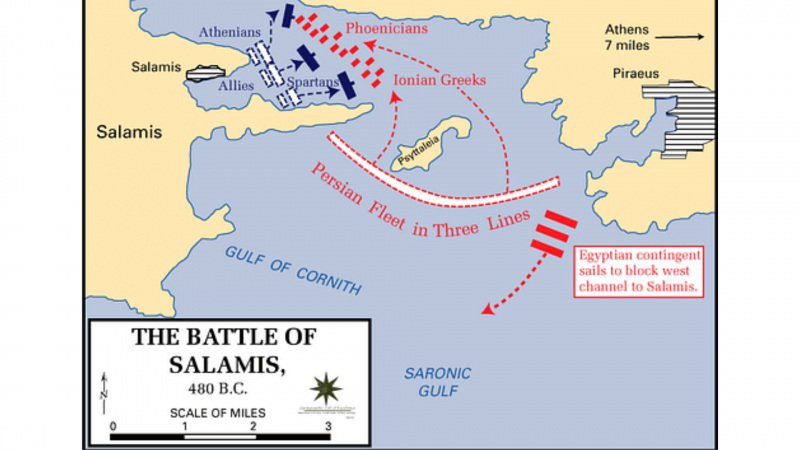
Photo: World History Encyclopedia 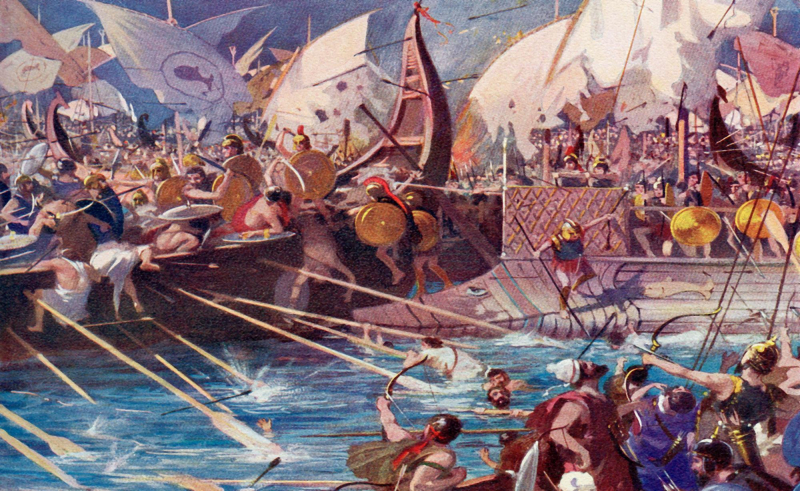
Photo: iGlobenews -
On November 5, 333 BC, the Achaemenid Empire, ruled by Darius III, and the Hellenic League, commanded by Alexander the Great, engaged in combat in southern Anatolia at the Battle of Issus (also known as Issos). It was the first conflict between Darius III and Alexander the Great and the second major battle of Alexander's conquest of Asia. The Macedonian soldiers ultimately defeated the Persian armies in the conflict.
At the Battle of the Granicus, the Hellenic League soundly beat the Persian satraps of Asia Minor, who were commanded by the Greek mercenary Memnon of Rhodes. Darius then assumed personal leadership of his army. To cut off the Hellenic advance's supply line, he recruited reinforcements and then led his forces in a surprise march behind it. The fight at the Pinarus River's mouth and the town of Issus was started in motion when Alexander was compelled to countermarch.
The collapse of Persian dominance began with the decisive Hellenic victory at the Battle of Issus. The Persian army had never before been routed in front of the King, Darius III, at the time. Following the conflict, the Hellenes seized Darius' mother Sisygambis, his wife Stateira I, his children Drypetis and Stateira II, and his wife Stateira I, all of whom had joined Darius on his campaign. The captive women were treated with great respect by Alexander, who later wed Stateira II. Later, 8,000 Greek mercenary warriors of the Battle of Issus who had participated in the Persian army were enlisted by the Spartan king Agis III and used in his war against the Macedonians. Agis beat Coragus, the Macedonian general in charge of the Peloponnese and the garrison of Corinth, in the summer of 331 BC, but ultimately lost at the Battle of Megalopolis.
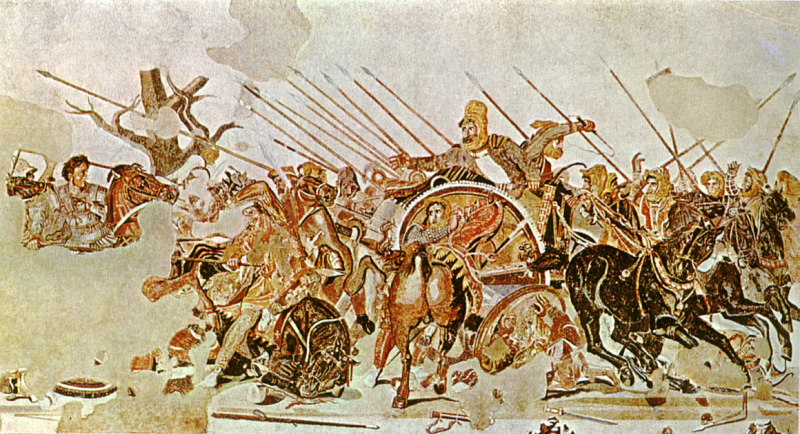
Photo: Wikimedia Commons 
Photo: Wikiwand









